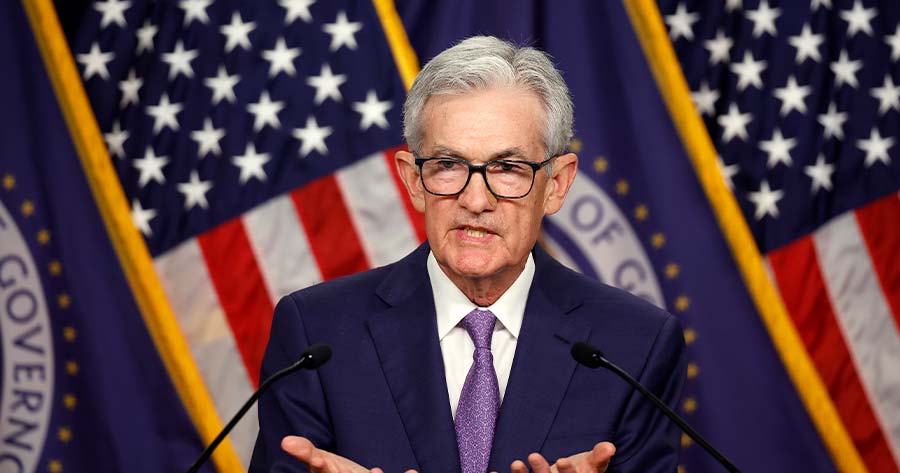The U.S. Federal Reserve decided to maintain interest rates at their current range of 4.25%-4.50% on Wednesday, while acknowledging that the risks of increasing inflation and unemployment have intensified. This development adds further complexity to the economic forecast for the country, as policymakers contend with the consequences of President Donald Trump’s tariff policy.
Fed Chair Jerome Powell highlighted that it remains uncertain whether the U.S. economy will maintain its growth trajectory or falter amid rising unpredictability and potential inflationary spikes.
“The scope, the scale, the persistence of those effects are very, very uncertain,” Powell said regarding Trump’s future action. “So it’s not at all clear what the appropriate response for monetary policy is at this time.”
Powell’s remarks suggest that the Federal Reserve is adopting a wait-and-see posture as Trump’s ambitious policy agenda unfolds. The Fed’s report and Powell’s discussions with journalists reaffirmed the economy’s ongoing vitality, with sustained job creation and robust economic expansion.
While there was a reported decline in GDP for the first quarter, Powell explained that it was distorted by an unusual influx of imports, as entities rushed to circumvent anticipated tariff-induced import costs, with core domestic demand metrics still showing growth.
Financial markets are now anticipating the next interest rate reduction as early as the end of July.
FOMC statement on May 07, 2025
Although swings in net exports have affected the data, recent indicators suggest that economic activity has continued to expand at a solid pace. The unemployment rate has stabilized at a low level in recent months, and labor market conditions remain solid. Inflation remains somewhat elevated.
The Committee seeks to achieve maximum employment and inflation at the rate of 2 percent over the longer run. Uncertainty about the economic outlook has increased further. The Committee is attentive to the risks to both sides of its dual mandate and judges that the risks of higher unemployment and higher inflation have risen.
In support of its goals, the Committee decided to maintain the target range for the federal funds rate at 4- 1/4 to 4-1/2 percent. In considering the extent and timing of additional adjustments to the target range for the federal funds rate, the Committee will carefully assess incoming data, the evolving outlook, and the balance of risks. The Committee will continue reducing its holdings of Treasury securities and agency debt and agency mortgage-backed securities. The Committee is strongly committed to supporting maximum employment and returning inflation to its 2 percent objective.
In assessing the appropriate stance of monetary policy, the Committee will continue to monitor the implications of incoming information for the economic outlook. The Committee would be prepared to adjust the stance of monetary policy as appropriate if risks emerge that could impede the attainment of the Committee’s goals. The Committee’s assessments will take into account a wide range of information, including readings on labor market conditions, inflation pressures and inflation expectations, and financial and international developments.
Voting for the monetary policy action were Jerome H. Powell, Chair; John C. Williams, Vice Chair; Michael S. Barr; Michelle W. Bowman; Susan M. Collins; Lisa D. Cook; Austan D. Goolsbee; Philip N. Jefferson; Neel Kashkari; Adriana D. Kugler; Alberto G. Musalem; and Christopher J. Waller. Neel Kashkari voted as an alternate member at this meeting.





